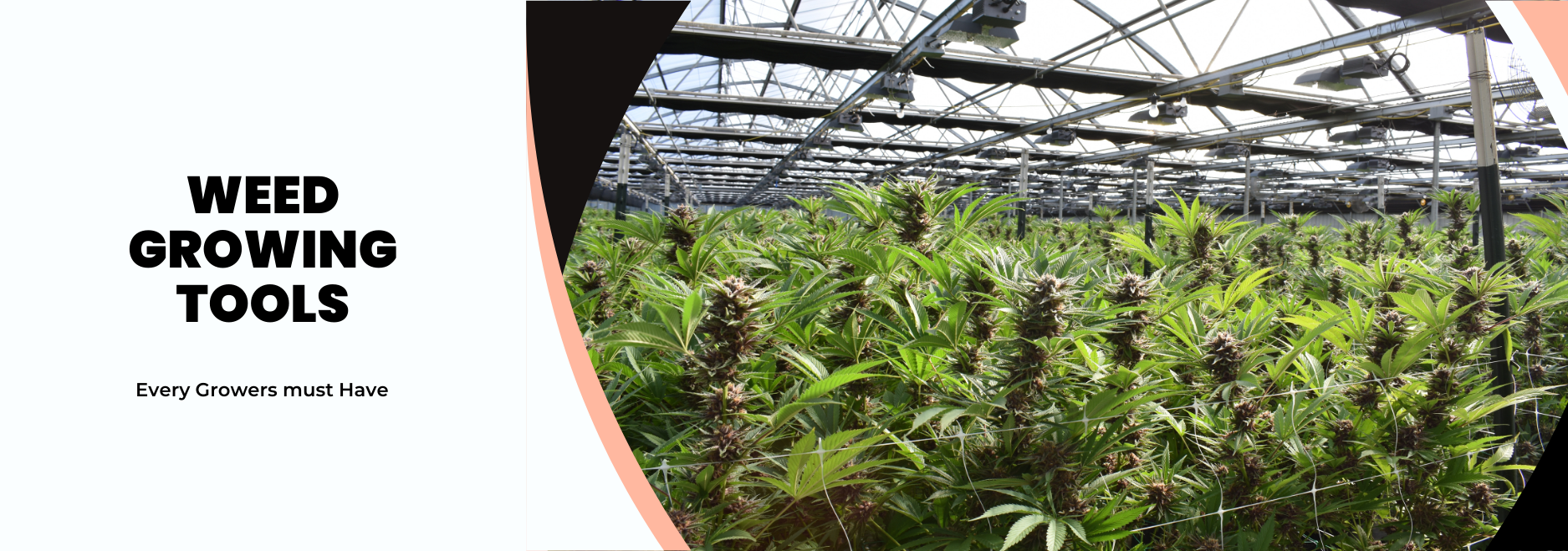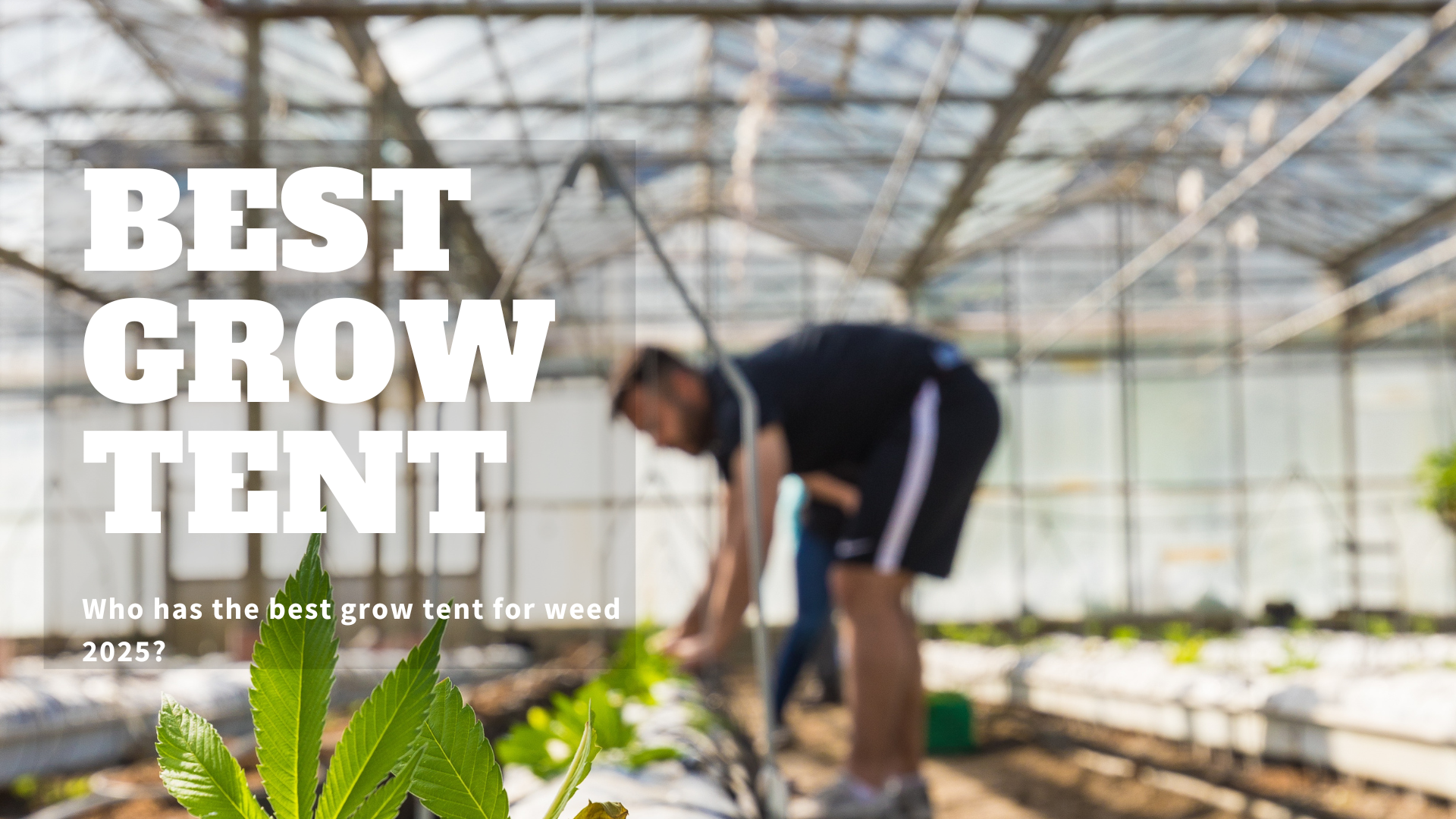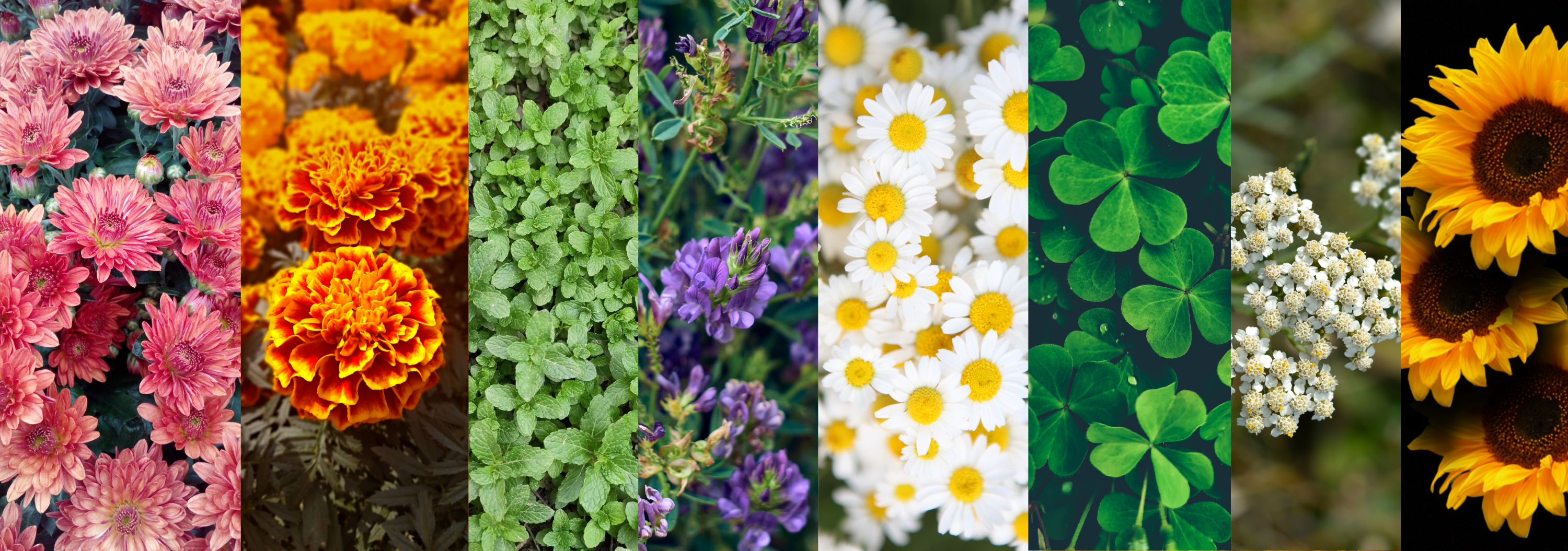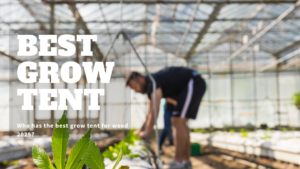Growing a garden with healthy and sticky buds is the dream of any cannabis grower, but it’s not free of its challenges.
One such challenge is learning to prevent cannabis pests and bugs from destroying your marijuana plants.
If you can weave your way around the challenges, the reward awaits. To a true grower, the reward is not just the high from smoking your flower but also overcoming the daily challenges the grow process throws at every turn.
In this article we share ways to protect your grow operation from pests and bugs.
Organic ways to prevent cannabis pests and bugs from marijuana plants
As the saying goes, prevention is better than cure. To a marijuana farmer, this implies minimizing the risk of any full-blown infestation from the start by putting preventive measures in place.
Secure your grow area.
The primary preventive measure is to secure the environment that your plants can thrive in.
Here, we consider indoor and outdoor grow operations.
For indoor growers, this is not difficult considering indoor spaces are already isolated from the outside world; a grow tent of some sort can act as a protective barrier.
Unfortunately, I cannot say the same for outdoor operations. Outdoor operations are far more exposed to elements that inhabit gardens, fields, and forests.
One way to deal with this is to use an outdoor grow house/tent or fence your garden.
Keep your garden clean.
Upon installing a barrier to keep crops protected, proper cleaning and sanitization practices should be in place.
Keep a clean pair of clothes and shoes to change into before entering your grow room to avoid introducing cannabis pests that attach to clothing to your garden.
Always handle your crops with gloves and protective gear and sanitize and sterilize all devices and tools you use to manage your crops, spraying these tools with either an alcohol solution or hydrogen peroxide to kill a majority of the potential cannabis pests.
Keep cannabis pests away from clones or seeds

How? You may ask.
Buy clones or seeds from a known trusted supplier.
Clones are susceptible to cannabis pests and insects from the locations in which they are made. The locations are usually large-scale cloning operations and are not as easy to monitor. Hence, clones can sometimes come with insect eggs or pests that go unnoticed until the situation turns into a full-blown infestation.
Marijuana Seeds, on the other hand, don’t typically arrive contaminated with insects or pests. This gives the grower the advantage of monitoring the plants for only new invasions. It also saves from worrying about the possibility of a full-blown infestation because pests or bugs were not detected early.
Pick the best growing medium for safe crops.
Growing mediums for cannabis range from hydroponics, rock wool, and clay pellets to gravel, among others.
Hydroponics is the best medium since cannabis pests and bugs can barely survive in water.
Materials like clay pellets, rock wool, and gravel are also usually free from insects and bugs, while soil, on the other hand, is a perfect breeding medium for unwelcome bugs.
This is why it is crucial to know the source of your soil and read reviews from past customers before purchasing.
Use tools for early detection of cannabis pests, like fly strips or sticky pads.

These can be placed near your crops and used as a way of monitoring if or when bugs are present since you will see them sticking to the strips. Detecting the presence of bugs and insects early on will later save you an expensive blowout infestation.
Companion planting
Companion growing relates to growing other plant species together with your cannabis plants.
These species offer myriad benefits to your growing operation; hence they are referred to as ‘companions.’ It’s an excellent and natural way to fend off uninvited cannabis pests in your garden.
Plus, the strategy is a perfect excuse to add other species in your garden to boost diversity and add aesthetic appeal.
The trick is to introduce a plant with a strong smell that distracts the cannabis pests. Examples of companion plants include Melissa, lavender, coriander, basil, and peppermint.
Beneficial insects
Introduce predator insects that feed on many insects that have an appetite for weed and damage the crop. Insects like praying mantis, ladybugs, and green lacewings, among others, are natural predators that wage war with the insects and bugs that attack your plants.
Heat
Growers can eliminate certain cannabis pests by spraying or submerging the plant in hot water for 10-20 minutes at 1050F or heating the room to 1150F for 60 minutes.
Keep in mind that this could be dangerous for the plants.
Recommended Pesticides To Control Cannabis Pests, Bugs and diseases in marijuana plants
Diatomaceous earth
Diatomaceous earth is a mix of microscopic shards made of fossils that will damage insects that come in contact with them. But, on the other hand, it creates a protective barrier against ground dwellers such as ants.
Avid
Avid is a harsh and expensive pesticide that works if nothing else is getting the job done. The pesticide infiltrates plant tissue. Therefore avoid it during the flowering stage.
Do not spray repeatedly, or mites will quickly become resistant to the pesticide.
Bacillus thuringiensis (BT) spray
It’s a biological insecticide that kills larvae and prevents pests from being able to eat the plant.
It is advised to spray the plants immediately after you notice the pests.
Essential IC3 or bed bug killer
It is a mixture of different pesticides that control insects. They are distilled and filtered to remove harmful compounds, making them organic and safe for humans and plants. However, it only stays effective on the plant for eight hours, so you need to apply it daily.
Forbid
Forbid is made of strong chemicals that infiltrate the plant tissue, just like avid. Unfortunately, mites also easily become resistant to it, so it’s not advised to spray more than once in a row.
Insecticidal soap
Insecticidal soap weakens aphids, mites, thrips, and whiteflies’ outer shells and is safe to use on plants.
Spinosad
Spinosad is not as effective as the BT spray, but it kills insects and pests like caterpillars, inchworms, loppers, spider mites, thrips, and whiteflies on contact.
Common cannabis pests and bugs that attack cannabis plants and How to get rid of them
Below we discuss a few types of insects and cannabis pests and how to control them.
Whiteflies
Whiteflies are about 2 millimeters in length. They hide beneath cannabis leaves, where they nourish themselves with nutrients from the plant. When you shake an infested plant, you will see adult whiteflies fly off the plant.
They spread disease quickly from one plant to another and damage the leaves and other plant parts, weakening it.
Prune your plants and hose them off, but not while they are flowering.
Whiteflies do not do well around marigolds and zinnia, so planting these plants next to your cannabis plants can keep them away.
Spray your plants regularly with a natural mix of garlic or vegetable oil and adequate water.
Ensure your growing environment is well ventilated and moisture-free to eliminate the humid conditions these flies thrive in.
Essential IC3 and Spinosad are other options you can use.
Fungus gnats
Fungus gnats are tiny black bugs (3-5 millimeters) that you can see crawling around in your soil and towards the base of your cannabis plants.
They don’t physically eat the plants, but these pesky creatures can create root damage, which weakens the crops due to poor soil drainage, which causes a high susceptibility to injury, disease, and infestation. These bugs love moist soil, and that’s why cannabis offers a perfect habitation for them to flourish.
To get rid of these bugs, eliminate moisture so that you can interfere with their breeding cycles since adults lay eggs in moist soil. You can do so by keeping the soils’ top layer dry or by placing a cloth over your soil.
Aphids
Aphids are 1-10 millimeter insects that vary in color, ranging from green, red, white, or even black. They inhabit the leaves and stems of weed plants, feeding on the plant, causing leaves to wilt, curl, become yellow or die completely.
Like Whiteflies, prune off damaged or heavily infested leaves with aphids and quickly dispose of them.
Hose the plants down and follow up with a garlic oil mixture or a vinegar-water solution that aphids hate. Other options to use include Essentria IC3, Spinosad, or insecticidal spray.
You can also introduce beneficial insects like ladybugs that feed on aphids.
Spider mites
Spider mites are red or black tiny critters, usually less than 1 millimeter in size, that live underneath the leaves and spin their notorious webs.
They cause damage to plant cells and turn leaves yellow, wilted, or even dead. In addition, they impact yield size, stunt growth of the cannabis plant, and interfere with bud development.
The best way to get rid of them is through organic means. This is because they are in some way resistant to pesticides and other chemical solutions. Begin by pruning away the damaged parts, ensuring to remove any web created by the spider mites.
Next, gently hose the plant to eliminate more of the bugs.
Finally, give your plants a thorough spray with appropriate ratios of a water-alcohol mixture, ensuring to get the solution on the underside of the leaves as well.
Repeat this 2-3 times a day and monitor well to see how the solution is working.
If the other methods are not working, you can try Essentria IC3 and insecticidal soaps and sprays made from natural ingredients.
Barnacles
Barnacles are scale insects that come in various colors. They are usually found on stems and under leaves.
When they find favorable habitation conditions, they settle and suck the life out of the stems and leaves of the plant. However, if the infestation worsens, the plant begins to weaken and release honeydew.
Move the plant to an outside area where you can spray it to cut down the population. Remove leaves and buds that are heavily infested and spray with insecticidal sprays, garlic oil, or Essentria IC3.
Broad mites
Broad mites are tiny and difficult to see even under a microscope.
When infested, new growth may come in twisted, blistered, and appear wet or plastic-like.
If the plant is in the flowering stage, buds may turn brown and die.
They usually hang out inside the cervices of leaves, inside buds, and lay eggs inside the plant.
Broad mites are the toughest to get rid of, but garlic oil, insecticidal soaps, mighty wash, avid, forbid, and diatomaceous earth are just about the solution.
Leaf miners
Leaf miners are larvae of any bugs that live inside leaves and tunnel through them for food. They usually are 1/8 inch when hatching. It is uncommon to see miners before noticing the damage they leave. They live inside the tissue of leaves, eating the best parts and leaving a trail of damage behind.
Environmental controls indoors will prevent bugs from laying eggs in your plant. For example, remove affected leaves or crush the larvae by pressing your fingers together where trails are visible. You could also use spinosad, garlic oil, and BT spray.
Thrips
Thrips are common insects for indoor growers since it’s difficult to reproduce in large numbers outside. They may appear dark, yellow, golden, or translucent. Based on the stage of life, they may or may not have wings. They generally move in a herd together, leaving behind shiny or bronze spots where leaves were bitten.
Damage has been described as dried spit. They strip leaves of chlorophyll, and leaves turn brittle and dark and then crumble.
Female thrips create holes in the plant matter where they lay their eggs. Then, thrips flourish and reproduce inside the buds.
To get rid of them, use insecticidal soaps, garlic oil, and spinosad. Shaking branches will also make thrips fly or jump to other places to live.
Integrated Pest Management (IPM)
Integrated Pest Management (IPM) is a proactive, multifaceted approach to tackling pests.
Rather than relying solely on pesticides, IPM combines prevention, monitoring, and targeted control strategies to protect cannabis plants with minimal environmental impact.
- Prevention: Quarantine new plants, sanitize grow areas, and maintain optimal humidity/temperature.
- Monitoring: Regular inspections, sticky traps, and quick identification of infestation signs.
- Control: Use biological controls (like beneficial nematodes or ladybugs) first, then use organic or chemical treatments if necessary.
- Evaluation: After applying control measures, reassess to ensure pests are eradicated, and conditions remain stable.
Step-by-Step Pest Control Methods
Organic Approaches
- Neem Oil Sprays
- Natural fungicide and pesticide that disrupts insect feeding.
- Apply to affected leaves (including undersides) every few days until pests are gone.
- Beneficial Insects
- Ladybugs, lacewings, and praying mantises prey on many cannabis pests.
- Ideal for greenhouse or indoor grows where they can be contained.
- Diatomaceous Earth (DE)
- A fine powder that damages insect exoskeletons, leading to dehydration.
- Apply around soil and on leaves (if needed), but avoid inhaling the dust.
- Soap & Water Solutions
- Mix mild insecticidal soap with water and spray on leaves to disrupt pest membranes.
- Effective against aphids, thrips, and whiteflies.
Chemical Solutions
Disclaimer: Only use chemical pesticides as a last resort. Always follow local regulations and product guidelines.
- Pyrethrin-Based Sprays
- Derived from chrysanthemum flowers, pyrethrin is potent against a range of pests.
- Safe if used correctly but can harm beneficial insects.
- Synthetic Pesticides
- Check that the product is labeled for use on cannabis (where legally applicable).
- Always wear protective gear and follow pre-harvest intervals to ensure no chemical residue remains on buds.
Prevention & Maintenance Tips
- Sanitize Regularly
- Clean grow tools (trimmers, pots, etc.) and promptly dispose of dead leaves or plant debris.
- Monitor Environment
- Keep temperature/humidity in check—high humidity often invites pests like fungus gnats and mold.
- Use oscillating fans and proper ventilation to discourage pests from settling.
- Sticky Traps
- Placing yellow or blue sticky traps around your plants helps detect and reduce flying insects (fungus gnats, whiteflies, thrips).
- Quarantine New Plants
- If you add clones or plants to your grow, isolate them for 1–2 weeks to ensure they’re pest-free.
- Use Quality Soil & Nutrients
- Start with sterile soil to avoid introducing larvae or eggs.
- Healthy, well-nourished plants are less susceptible to infestation.
FAQ: Cannabis Pest Issues
1. What is the most common cannabis pest?
Spider mites are among the most notorious due to their rapid reproduction. However, aphids and fungus gnats also frequently appear in indoor and outdoor grows.
2. Can I use household pesticides on cannabis plants?
It’s risky. Always check if a pesticide is labeled and approved for use on cannabis. Certain chemicals can linger and affect the final product’s safety and taste.
3. How often should I check my plants for pests?
Daily or at least 2–3 times a week. Early detection is the best way to stop a pest outbreak from spreading.
4. Can I combine organic and chemical methods?
Yes, but apply them carefully and sparingly. Overlapping treatments may cause plant stress and damage beneficial microorganisms.
5. What if pests return after treatment?
Reassess your grow environment (humidity, temperature, cleanliness). Also, confirm that you’re applying treatments as directed and for the right duration to break the pest life cycle.
Additional Resources & References
- Integrated Pest Management in Greenhouses:
- Biological Control Methods for Thrips:
- Organic Cannabis Pest Solutions:
Final Thoughts
Maintaining a pest-free grow is possible with regular monitoring, proactive prevention, and targeted treatments.
You’ll protect your plants’ vigor and harvest potential by recognizing early signs and acting swiftly—whether using organic solutions like beneficial insects or chemical treatments.
Always remember that healthy plants in a clean environment are far less likely to become pest havens.
As we part
- Subscribe to our newsletter for more cannabis grow tips and pest management techniques.
- Check out our Recommended Products for pest prevention and control solutions.
- Got a favorite organic remedy? Share your experiences in the comments below!

















